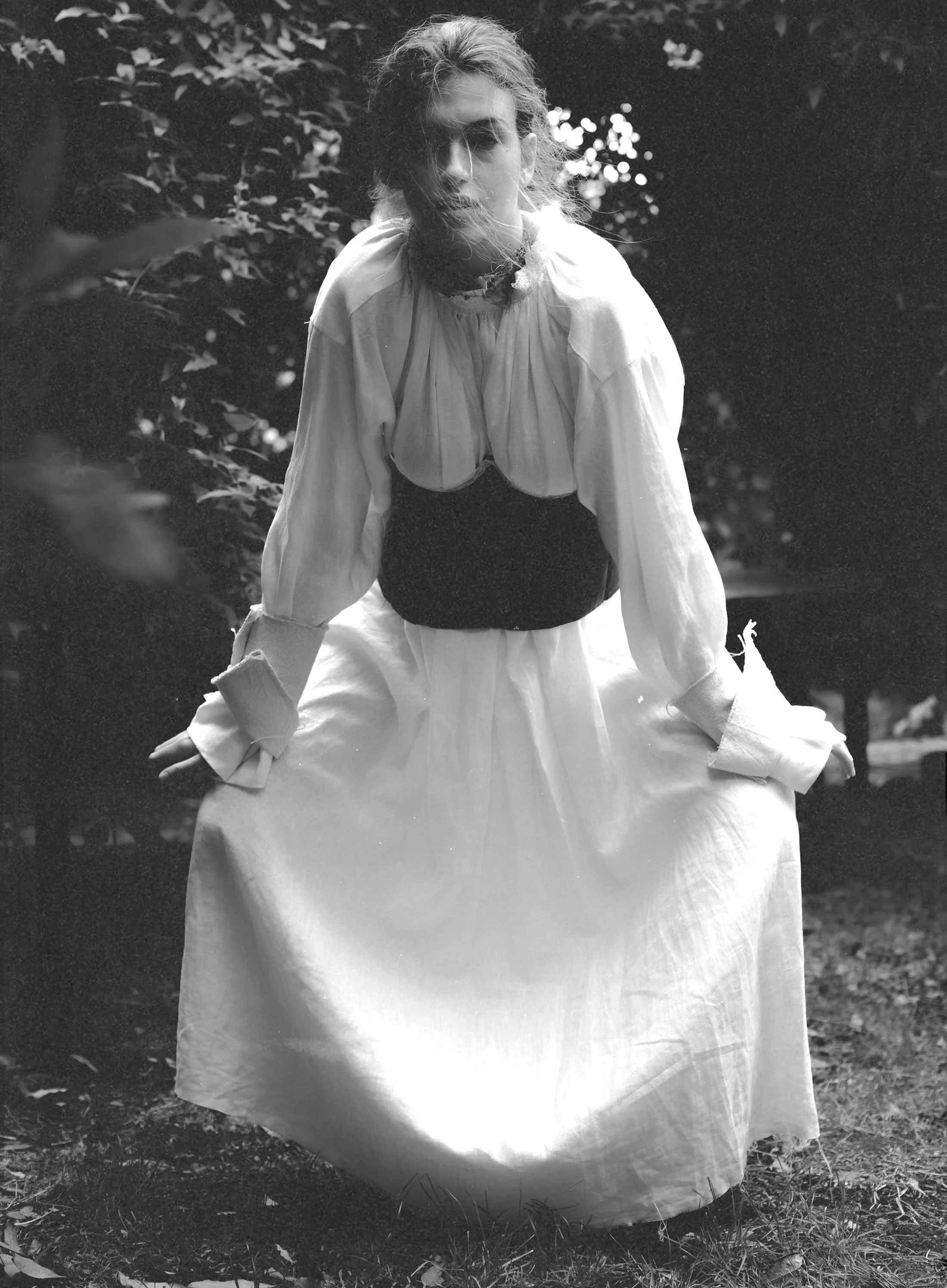Lucia Joyce
Nereis Ferrer explores the life story of Lucia Joyce, James Joyce’s daughter, through the prism of her authentic passion for becoming a dancer. The editorial presents a painful dream, which was not meant to be realized. We witness the crisis, the breaking point in life, through the melancholic atmosphere, the desperate stare, and the body postures. While the attempt for dance movements is present, the next shot takes us to the impossibility of this action, reminding of the recent history and the reality of psychiatric centers welcoming women like Lucia.
We never meet the main character's stare except for the one specific shot in which she appears in a ghost-like manner, strong yet soft and feminine, as in a daydream of what might have been.
Nereis addresses the moment she decided to photograph this story, “The first spark of interest came from the photographer Berenice Abbott and her work. I was reading a photography book that included some of her photos, and a woman who appeared in one of these photos caught my attention.” We speak with Nereis about the details behind the shoot, the work with the model, the creation of the atmosphere, and the real story of Lucia’s life.
Photographer Nereis Ferrer Stylist Carlota Puncer Make Up Silvia Rubio Talent Elisabet Mallafre Clothes by Annother Archive Falke Selected Clothes Eugenia Gusmerini Bologaro Trevor Gorgiela Studio Ura Perez Molten Matter
‘The first spark of interest came from the photographer Berenice Abbott and her work. I was reading a photography book that included some of her photos, and a woman who appeared in one of these photos caught my attention.’
The story is dedicated to the character of Lucia Joyce, James Joyce’s daughter. What caught your eye in her story?
The first spark of interest came from the photographer Berenice Abbott and her work. I was reading a photography book that included some of her photos, and a woman who appeared in one of these photos caught my attention. I then began to explore and inquire about that girl, and as I read her story, I was truly moved, so I thought it would be interesting to recreate the character of Lucia Joyce under my eyes in an Editorial.
‘Back then, many women felt like Lucia; they couldn't show themselves as they truly were and had no mechanisms to change that either. This is why I wanted to reflect a person trapped, sad and lonely’
Today, one of the most prominent themes in art, cinema, and even cartoons is the empowerment of women. It is also reflected in your work rethinking Lucia Joyce’s life. What was important for you to retain from her biography as opposed to the added details during the shoot?
Back then, many women felt like Lucia; they couldn't show themselves as they truly were and had no mechanisms to change that either. This is why I wanted to reflect a person trapped, sad and lonely, but without exhibiting an extreme 'madness,' as I didn't want it to fall into the clichés associated with mental illness. For this, it was important to create an environment and an atmosphere consistent with the character. It was also essential to work with the model on her 'acting,' understanding, and feeling Lucia's point of view, to properly embody her.
The aesthetics of the editorial is very cinematographic: the approach to the set, the work with light, and the composition in the frame. Who are some of the film directors you admire in terms of the frame they built?
The work of Tarkovsky, Shepitko, Bergman, Malick, and Pawlikowski is a source of inspiration. And recent works such as Les Garçons Sauvages by Bertrand Mandico or The Lighthouse by Robert Eggers fascinate me on a cinematic level.
‘Also, we represent Lucia's discomfort with details that involved both acting and styling (taking off her shoes or showing what she hides under her dress).’
What were some guidelines for choosing styling and makeup to present the character?
We draw on photographic references from pictorialism and avant-garde era such as Berenice Abbott, Man Ray, Lee Miller, and Dora Maar, where the figure of the woman appears characterized according to the reinterpretation we wanted to show of Lucia Joyce. Also, we represent Lucia's discomfort with details that involved both acting and styling (taking off her shoes or showing what she hides under her dress). We started with styles that remind us of the bourgeois with the use of handcrafted fabrics moving into suppressing shapes and volumes, extraordinary, elegant, garments. And as we go through the editorial, as if it was a documentary shoot, Lucia sheds everything that bothers her, and the outfits become simpler with curious elements showing us her love of dance.
Which moment from this project is most precious to you?
The moment when everything imagined becomes real and what I see through the lens flows and brings me back to that time. At that point, when the magic occurs, it’s time to shoot.











